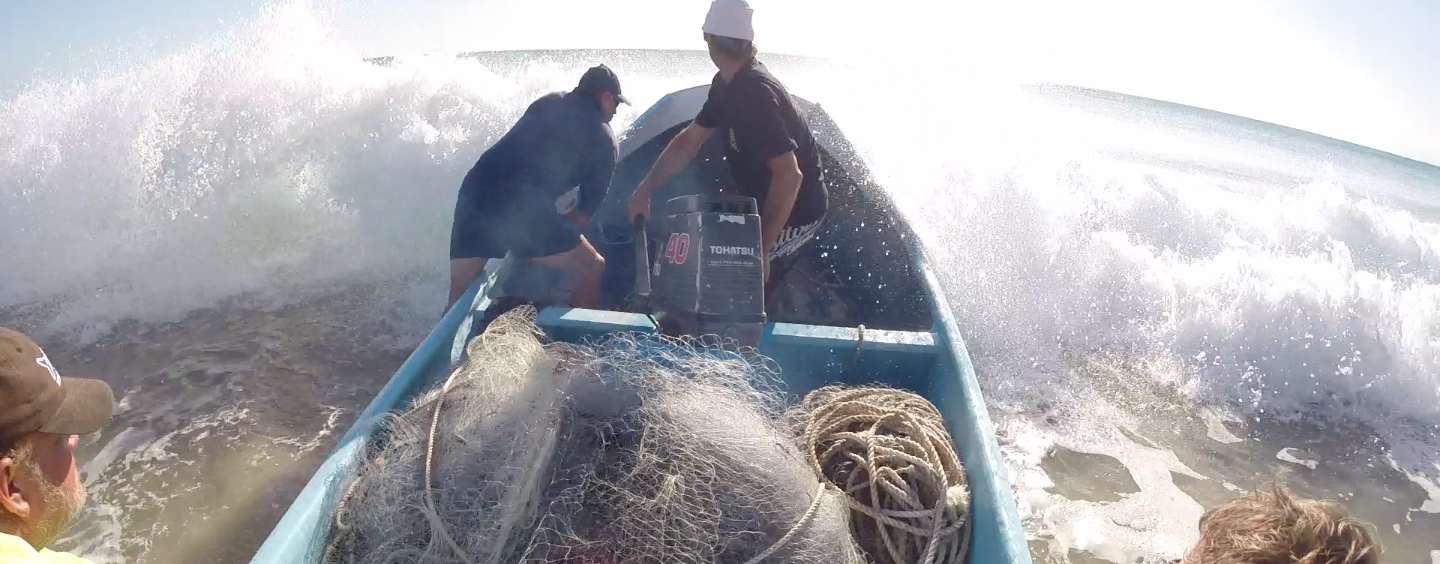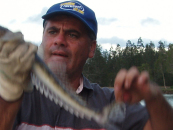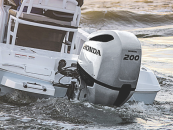Autumn has rolled in. The cool westerlies star t to blow and the seas calm of f to form a lazy ocean with little swell. To most anglers, this means the star t of the luderick, bream and tailor season, and it is generally time to head down to the local tackle shop to stock up on new hooks, lines and sinkers.
To other anglers, this signif icant change in weather means the star t of the annual mullet run. From conception, the mullet f ish school and feed on small crustaceans, sea grass and moss throughout the rivers ands creeks. As the years pass, they grow larger, sometimes exceeding t wo kilos in weight.
The first sign of movement comes when the first southerly blow occurs in conjunction with the right moon phase in the months of April and May. The professional mullet netters congregate throughout the lower reaches of the rivers, around headlands and the sheltered corners of the bays waiting in anticipation for the thousands of fish to move out into the ocean. Human spotters use the best vantage spots to look down onto the water, waiting for a sudden change in colour before radioing back to base camp that a school is on its way. While a westerly wind blows, the schools of mullet will generally hold and group up in certain spots.
This makes netting difficult, especially if the fish are congregating around rocks and other submerged debris. Once the wind swings around to a southerly direction, the fish move again and swim out of the rivers towards the beaches. Unfortunately, conditions change with a southerly blow. Sea and swell heights increase, and the ocean becomes angry. But to a mullet-netter, this is nothing to fear. For these guys, once the money train starts to push out, the nets must be launched.
It is quite amazing to watch how professional and efficient these guys work as they launch their boats with massive nets tied to the back. Some row and others use outboards and even jet skis and jet powered boats to motor around the school before beaching the vessel in sometimes-rough water. The nets are then tied to the front of the four- wheel drives as they reverse back up the beach to expose the nets and fish from the water. The sight is nothing short of spectacular, as thousands of large sea mullet are captured in a single haul. The fish get caught up in the net and are guided down through funnel section to a pocket where there is no escape. Once beached, the fish are packed into containers, and sometimes straight into the back of a four-wheel-drive ute before being taken to the local seafood co-ops for processing.
Surprisingly, hardly any other species of fish are caught when the mullet are netted, given that massive jewfish and other species readily follow the fish during their annual run. Along the Gold Coast, netters are of ten seen around bays and bar entrances waiting for that dark ball of fish to move around the corner. Areas such as Kirra Beach are just one favourite spot frequently used. Over the border, Iluka north to Brunswick is another haven.
Most hauls of sea mullet average around a tonne or two in weight. However, there are instances when a crew can pull over twelve tonnes of fish in one drag. When you equate it out, this amount of fish can fetch over $30,000 on the market, making it a serious business. Surprisingly, the fish itself is not the valuable part. It is the roe inside the fish that raises the eyebrows of overseas consumers. The roe averages around 13 percent of the total weight of a sea mullet and can fetch up to $120 per kilo!
Now you know why you can buy mullet without their heads and gut so cheap from the co-ops. Sometimes, signs are placed along the highway advertising twelve kilos of mullet for ten bucks. At this price a fresh feed of tasty sea mullet never goes astray. If you are not into eating them, they can always be used in your crab pot or as preferred bait during the upcoming bream season…perfect!
By Paul Burt



























